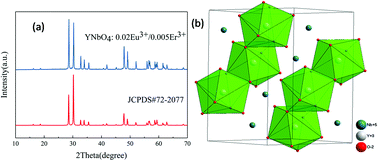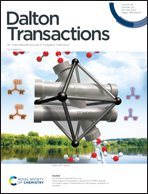A study on temperature sensing performance based on the luminescence of Eu3+ and Er3+ co-doped YNbO4
Abstract
Eu3+ and Er3+ co-doped YNbO4 powder phosphors were synthesized by a traditional high-temperature solid-state reaction method. A laser of 487.6 nm wavelength was selected to be the excitation source which can pump Eu3+ ions from its thermally populated low-lying 7F2 ground state to the excited state 5D2 and lift the Er3+ ions from their 4I15/2 to 4F7/2 states. Fluorescence intensity ratio (FIR) between the 5D0 → 7FJ emissions of Eu3+ and 4S3/2 → 4I15/2 emissions of Er3+ ions is remarkably dependent on temperature because of the dramatic increase of Eu3+ luminescence against a slight quenching of Er3+ luminescence with the rise of temperature. This temperature sensitive FIR can be favorably employed for temperature sensing, owing to this novel scheme of 5D2 excitation, instead of 5D0, from 7F2 and utilizing Er3+ luminescence as a reference for FIR measurements. This sample is also prominent for its excellent signal-to-noise ratio and is a promising candidate for an optical temperature sensor.



 Please wait while we load your content...
Please wait while we load your content...